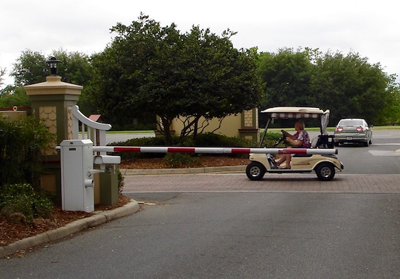Will Electric UTVs Be the New Kid in Town?
The wave of hype for electrifying the transportation system is probably only surpassed by the reality of it actually happening. For we who are well-ensconced in the electric environment of electric-powered PTVs, it may be a bit ho-hum, so what’s new? Most of us are also aware, especially if you read this column, of a wide range of small, versatile PTVs that may give us on road access, such as the Arcimoto, based in Eugene, Oregon (which, so far, has not come under attack by Antifa).
But when the king of the off-road brands announces a move to electric, you know there are serious things in the works. The following is an analysis of Polaris’ new strategy by my colleague and associate at Small Vehicle Resource, Marc Cesare. My edits, if any, are to insert a few sub-headings.
2021: A Turning Point for Electrifying UTVs?
Posted on March 3, 2021
An electric Ranger is the first product from the Polaris partnership with Zero Motorcycles.

Polaris’ New Push to Electrify UTVs
Polaris’ announcement that they will be producing a new electric Ranger in collaboration with Zero Motorcycles is a strong indication that 2021 may be a turning point for the electrifying UTVs. They are the leading UTV manufacturer and already produces an electric Ranger but with traditional lead acid battery technology. There was a lithium ion battery equipped option at one time, but the model was prohibitively priced. The Ranger EV with a lithium battery pack costs approximately $10,000 more than the lead acid version. This new Ranger EV is another step by Polaris as they increase investment towards electrifying UTVs and other powersports products.
At the end of 2019 the company created a new position, Senior Vice President of Electrification Strategy. Signaling the initiative’s importance, they filled it with the then president of Off Road, the company’s largest business division. In September 2020 they announced a 10-year partnership with Zero Motorcycles as a cornerstone to their electrification strategy. Named rEV’d up, the strategy aims to offer electric vehicle options within each of its core product segments by 2025. Zero Motorcycles is one of the leading electric powertrain technology companies.
Polaris Has Extensive EV Experience
Polaris actually has quite a bit of experience in electric vehicles, but mostly outside of their powersports segments. Through the years the company has acquired GEM, Goupil, Brammo Electric Motorcycles and Taylor-Dunn, all manufacturers of electric vehicles. However, these companies are primarily active in markets that are more tangential to powersports.
Polaris used the Brammo technology in the Ranger EV but not a motorcycle. Goupil produces light-duty commercial vehicles for the European market, GEM produces light-duty utility vehicles and transporters for college/corporate campuses and such, and Taylor-Dunn produces industrial utility vehicles. While these acquisitions were for commercial markets not powersports, Polaris gained a wealth of experience with electric vehicles.
Volcon is a startup looking to electrify powersports.
 Moving forward, these product lines can provide manufacturing volume and a broad product development base to further spread the cost of developing new electric powertrain technology. This could become a distinct advantage for Polaris that most of their competitors do not have. Can-Am, their leading powersports rival, is also moving into electrification, but is not active in other electric vehicle segments. Others, like Textron and Yamaha are major players in the golf car market.
Moving forward, these product lines can provide manufacturing volume and a broad product development base to further spread the cost of developing new electric powertrain technology. This could become a distinct advantage for Polaris that most of their competitors do not have. Can-Am, their leading powersports rival, is also moving into electrification, but is not active in other electric vehicle segments. Others, like Textron and Yamaha are major players in the golf car market.
Start-up challenger to Polaris?
More interesting and potentially tougher competitors may be new entrants into the market like Texas-based Volcon Motors. This electric vehicle start-up has plans to introduce an all-terrain electric motorcycle in the Spring of 2021, a two-seat electric UTV later in 2021 and a four-seat UTV in 2022.
Although start-ups lack the financial resources, manufacturing expertise and distribution networks of established players, they are not burdened by cultural legacies of a historical customer base, as well as management incentives tied to ICE based vehicles.
Thus “lightened”, so to speak, start-ups can forge into new technologies and develop new markets with a nimbleness and alacrity in which the establishment is often sorely lacking.
Electrifying UTVs is Challenging
Electrifying UTVs poses a unique challenge because of their size, performance requirements and usage profile. They need both power and range but still must remain reasonably priced. They need the power because, well, its powersports after all and a vehicle’s horsepower is a defining characteristic. Work-oriented UTVs, especially for heavy duty work applications, need plenty of horsepower as well. Users want to make long trail rides without being stranded in the middle of nowhere, or be productive work throughout the workday.
There is limited space for a battery pack in these very compact vehicles. In addition, a large sized battery pack will make the vehicles prohibitively expensive. It’s not surprising that they are starting with the lower priced Ranger. A small but efficient motor and small battery pack could keep prices low enough while still delivering better performance than the existing ICE engine in the Ranger. The new Ranger EV could also fit in nicely on college and corporate campuses or smaller farms/ranches where the range and work requirements would be not as demanding.
High-end, off-road performance vehicles might be the next step. Already a premium market, they may be able to more readily absorb the additional expense of a large battery pack. These higher-end models could also serve to demonstrate the unique performance characteristics of an electric powertrain as well as gauge the interest of a customer base that likes the sound of ICE engines.
An interesting aspect is that the performance customer is likely to wear out the rest of the vehicle before the advanced battery pack. Selling or leasing the battery pack separately from the rest of the vehicle may become an option. Approaching the UTV market from both ends may be the most likely strategy. Moving up the lower priced work-oriented UTVs and moving down from the highest priced, off-road performance UTVs, as electric powertrain technology improves and becomes more affordable.
Will the electric UTV find a market in gated communities? (Steve Metzger’s commentary)
Another way to put this question is, “Will electric UTVs get beyond the powersports/hunting segment? My guess is that they will. Perhaps less aggressively styled, but clearly a potential winner. They will come on the market with extra power that everyone loves and will also offer optional fully-enclosed driver/passenger compartments, a feature much lacking in current model PTVs.
Polaris electrics and competitors already have well-developed interior features, including Bluetooth, climate control, and vehicle interconnectivity. What’s not to like. They may not be so friendly on the golf course. This remains to be seen, but, hey not everyone golfs.
My guess is that over the next five years you will see many golf car dealers taking on electric UTV lines.
Contact the Author: Steve Metzger at smetzger@smallvehicleresource.com. Or check out our website at www.smallvehicleresource.com, where you will find an extensive database of vehicle models and can make side-by-side comparisons of vehicles based on a full set of specifications.


